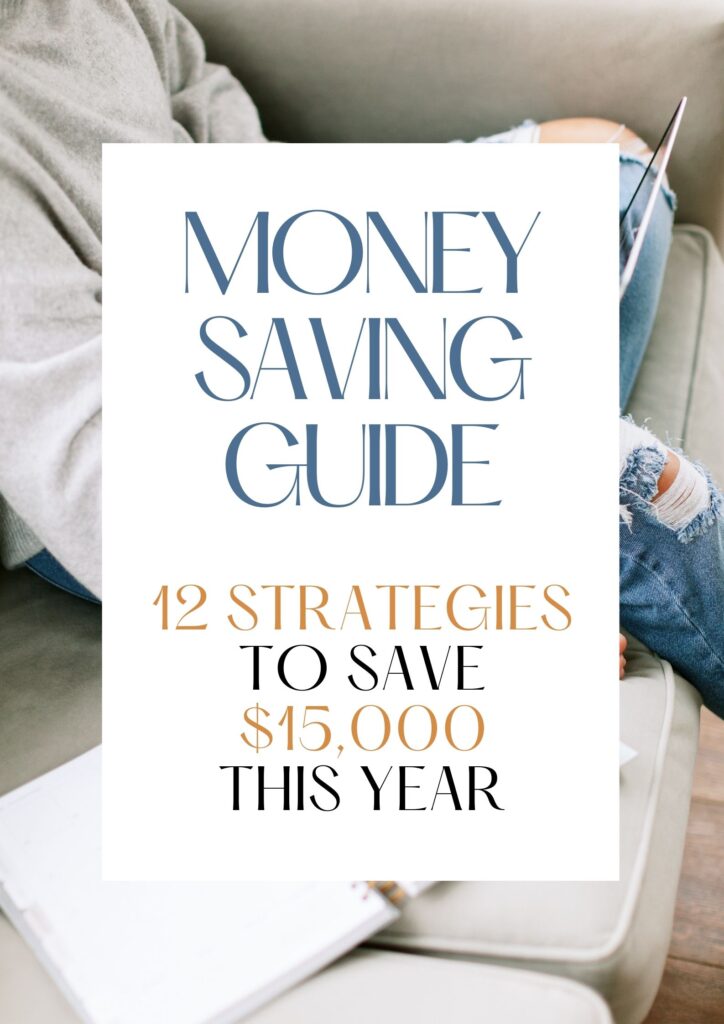
This is a mix of suggestions to help you have more money. It’s both things that can help you to earn more money, keep more of that money in your pocket and feel more in control of your money.
Ok, first… how can you earn more money?
1 – Ask for a Raise
Yep – pitch yourself to your employer. Ask to meet with your manager. Highlight how you add value to the team, what specific milestones, projects or achievements you are doing, what specific additional roles you’ve taken on, how you’ve mentored, lead or done more than your original job description. Think back on the last couple of years to months and identify what duties you hold now that you didn’t when you joined the team. Your role has likely changed. Has your compensation?
Start with highlighting those. Ask for feedback as to how you’ve been meeting or exceeding expectations. Share that the compensation for your role would be more on par with X (what you’d like to be making) based on the market and your role in the organization.
If they share that additional compensation isn’t possible, have another ask in your back pocket. Ask for adjusted hours, an admin or work-from-home day, more PTO or additional benefits that would make your life more flexible and keep your income the same.
Working as a PA and wanting to avoid the most common mistakes that PAs make when asking for a raise? We’ve got you covered. Download this free guide!
2 – Work More
Yes, I know you have tons of responsibilities, things to do, and likely… things you’d rather be doing… but during a time where you are pushing to save for college tuition, a car upgrade or to beef up your investments, can you pick up another job… PRN or consulting position? Or maybe, if you are paid hourly, you could do some overtime?
Calculate and decide if your time is worth it. Remember that only you can answer whether the money that you will earn will be worth the time you spend earning it.
Now… on to how you can keep more of the money that is coming into your household.
3 – Sell Things
Not only will you be getting rid of things around the house that you don’t need, want, or use, but you can use that to infuse some cashflow into your budget. Selling everything from furniture to footwear can eliminate clutter and improve the top line of your budget.
It’s key that when you DO sell things that that cash doesn’t disappear into your pocket, but gets put in the income category of your budget.
Speaking of budgets…
4 – Build a Budget
A budget – sounds simple, right?
A plan for your money.
Monthly. Each month – a written down plan for the money that’s coming into your house and the money that is leaving.
Divide your expenses into fixed and variable expenses and a debt/savings category. Before each month begins, put your budget on paper or in a spreadsheet or in an app – start with how much money you are bringing into your household – income goes at the top of the page, then your fixed expenses, debt payments and payoff strategy, savings and variable expenses go down the page… including some spending money/wiggle room… and end up with zero.
If the budget doesn’t balance, you have to adjust things!
5 – Trim down your expenses
Monthly streaming services – do you use them all?
Monthly subscriptions for the gym, the membership, that app that you downloaded, thinking that you’d use but don’t.
Use the library instead of the bookstore/amazon. Most libraries have a great collection of audiobooks, and electronic copies of many new books!
6 – Get a handle on impulse purchases
You know, those times when you are walking into a store to kill time and walk out $200 lighter?
Or when you are scrolling on social media, see an ad, wonder how the universe knows what you’d been thinking about and click click, boom… you bought something from an Instagram ad, again.
Impulse buying is often the symptom, not the disease… think back on the times that you’ve made impulse purchases in the past and try to identify the feeling or feelings you were having at the time. Were you bored? Upset?
That phrase… commonly used and probably not serving you… “Retail Therapy” – do you actually feel better after you spent that money? Do those purchases bring you lasting joy? Do you make use of those items that you purchased?
Are those impulse buys a part of the budget?
I do think it’s important to note that, having a buffer, some spending money or some wiggle room in your budget is smart. Don’t make your budget SO tight that it makes you claustrophobic.
So… what do you do IF you make an impulse buy that’s not part of the budget?
You’ll have to course correct… so the three choices are to 1 – Return the Item or Items… or if you are outside the window, you could consider reselling it, depending on what it is…. 2 – Adjust your budget categories to reflect the expenses or 3 – Pull money from savings to cover the expense. You are responsible for making sure the budget balances and that’s the way to do it, even when you stray off course.
7 – Food
Let’s talk about food and the budget. We all have to eat…. But it behooves you to think about ways to cut back on your food budget expenses.
Packing lunch, instead of eating out, running to the cafeteria or opting for a door dash delivery to nourish yourself during lunch.
Consider cutting back, even temporarily, on eating out if you are sprinting towards a big money goal.
Also… and this may just be me, but… during seasons where we are busier I’m less diligent about meal planning, prepping, and grocery shopping is more of a crap shoot than anything else… this disorganization leads to us throwing out more food than normal because I either buy things we don’t eat or we end up scrambling, eating out and not using the food we do have, which is a waste of food and money. I did an entire episode on my process for meal planning, using instacart for grocery shopping.
If you are consistently throwing food away, how can you trim down your shopping trips in that area?
8 – Invest
Saving money isn’t enough.
Saving money, even in a high yield savings account, isn’t enough to help you years down the road.
Investing is the key to building long term generational wealth. Investing early, consistently and wisely are so important. Both inside your company retirement like a 401k or 403b and on your own, in mutual funds, outside of tax sheltered retirement is the way to outstrip inflation.
Inflation – things get more expensive over time. We know this because in 1910 or 1950 a loaf of bread cost WAY less than it does today and don’t even get me started on the price of gas.
So… inflation exists. Things are getting more expensive over time and, if you are saving in a regular or high-yield savings account, you aren’t keeping up. What that means is that the rate of inflation is higher than the interest you are earning on those accounts.
In order to outrun inflation, you have to be investing. Investing is when you put money in the stock market, mutual funds, etc and that money grows at, on average, a higher rate than inflation. It’s a LONG game and it’s a LONG TERM plan for growing your money. Money that you invest in mutual funds should be money that you are planning to leave invested for 5-10 years at a minimum.
It should not be your emergency fund, your checking account balance or honestly any money that you might suddenly “need” in 6 months or a year. It’s money that, in the savings and debt category of your budget, you are choosing to invest for long-term wealth building.
Those are 8 of the ways that you can be diligent and intentional about having more money now and in the future. If you are ready to really get serious about your savings, investing, getting out of debt and building a future where you have way more money than you know what to do with, head to tracybingaman.com and download your Money Saving Guide. It’s 12 tips to save $15,000 this year – what a great way to start saving more and spending less! It’s at tracybingaman.com/save.
The 5-Day More Confident YOU Challenge – https://www.tracybingaman.com/challenge

